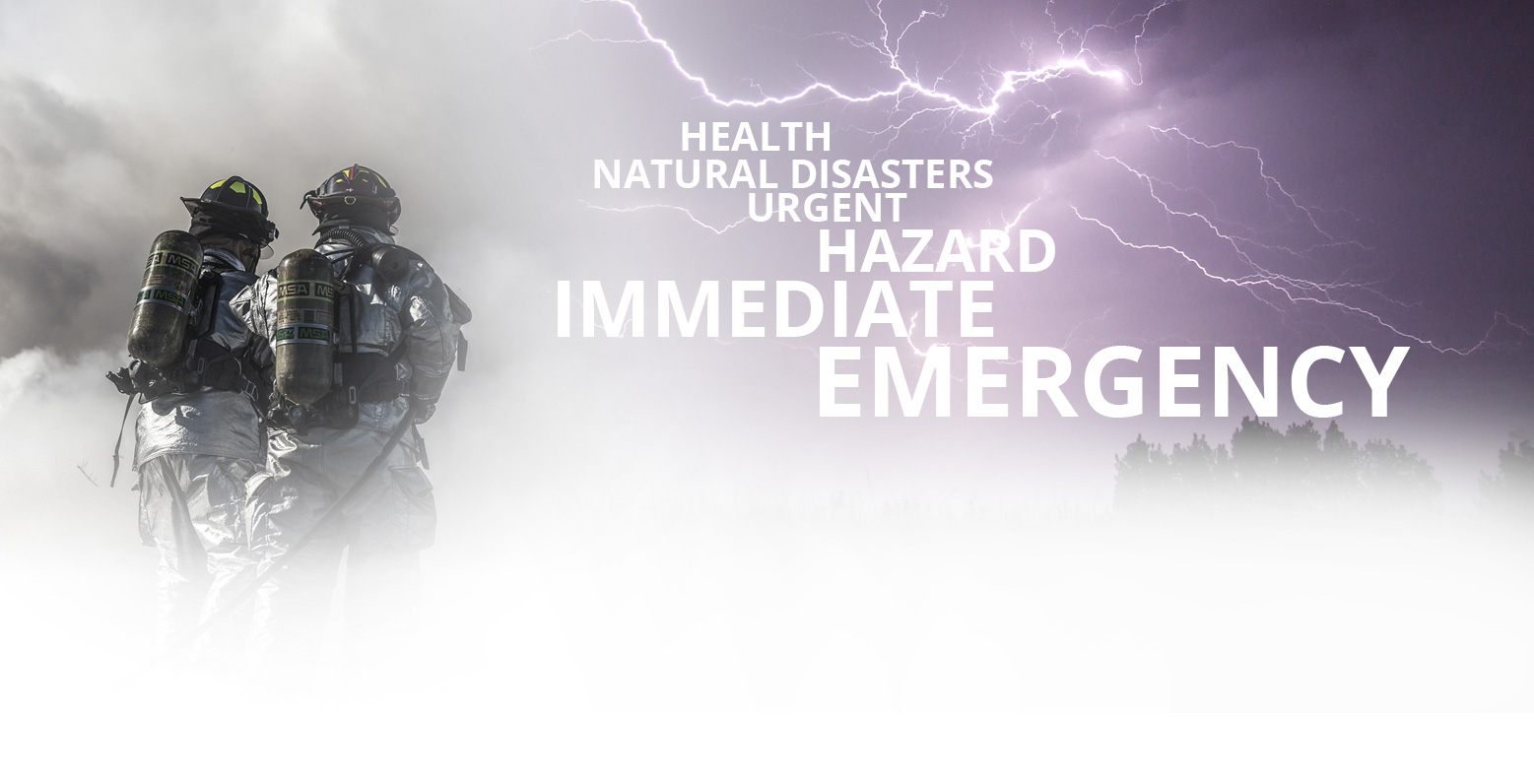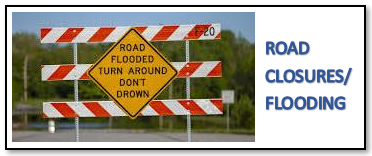Earthquakes
Information from Federal Emergency Management Agency
https://www.fema.gov/earthquake
An earthquake is a sudden shaking of the earth caused by the breaking and shifting of rock beneath the earth's surface. Earthquakes can cause buildings and bridges to collapse, telephone and power lines to fall, and result in fires, explosions and landslides. Earthquakes can also cause huge ocean waves, called tsunamis, which travel long distances over water until they crash into coastal areas.
The following information includes general guidelines for earthquake preparedness and safety. Because injury prevention techniques may vary from state to state, it is recommended that you contact your local emergency management office, health department, or American Red Cross chapter.
What to do before an earthquake
1. Know the terms associated with earthquakes.- Earthquake - a sudden slipping or movement of a portion of the earth's crust, accompanied and followed by a series of vibrations.
- Aftershock - an earthquake of similar or lesser intensity that follows the main earthquake.
- Fault - the earth's crust slips along a fault - an area of weakness where two sections of crust have separated. The crust may only move a few inches to a few feet in a severe earthquake.
- Epicenter - the area of the earth's surface directly above the origin of an earthquake.
- Seismic Waves - are vibrations that travel outward from the center of the earthquake at speeds of several miles per second. These vibrations can shake some buildings so rapidly that they collapse.
- Magnitude - indicates how much energy was released. This energy can be measured on a recording device and graphically displayed through lines on a Richter Scale. A magnitude of 7.0 on the Richter Scale would indicate a very strong earthquake. Each whole number on the scale represents an increase of about 30 times the energy released. Therefore, an earthquake measuring 6.0 is about 30 times more powerful than one measuring 5.0.
- Repair defective electrical wiring, leaky gas lines, and inflexible utility connections.
- Bolt down water heaters and gas appliances (have an automatic gas shut-off device installed that is triggered by an earthquake).
- Place large or heavy objects on lower shelves. Fasten shelves to walls. Brace high and top-heavy objects.
- Store bottled foods, glass, china and other breakables on low shelves or in cabinets that can fasten shut.
- Anchor overhead lighting fixtures.
- Check and repair deep plaster cracks in ceilings and foundations. Get expert advice, especially if there are signs of structural defects.
- Be sure the residence is firmly anchored to its foundation.
- Install flexible pipe fittings to avoid gas or water leaks. Flexible fittings are more resistant to breakage.
3. Know where and how to shut off electricity, gas and water at main switches and valves. Check with your local utilities for instructions.
4. Hold earthquake drills with your household:
- Locate safe spots in each room under a sturdy table or against an inside wall. Reinforce this information by physically placing yourself and your household in these locations.
- Identify danger zones in each room - near windows where glass can shatter, bookcases or furniture that can fall over, or under ceiling fixtures that could fall down.
6. Review your insurance policies. Some damage may be covered even without specific earthquake insurance. Protect important home and business papers.
7. Prepare to survive on your own for at least three days. Assemble a disaster supply kit. Keep a stock of food and extra drinking water. See the “Emergency Planning and Disaster Supplies” and “Evacuation” chapters for more information.
Remain calm and stay inside during an earthquake. Most injuries during earthquakes occur when people are hit by falling debris when entering or exiting buildings.
What to do during an earthquake
Stay inside until the shaking stops and it is safe to go outside. Most injuries during earthquakes occur when people are hit by falling objects when entering or exiting buildings.
- Drop, Cover and Hold On! Minimize your movements during an earthquake to a few steps to a nearby safe place. Stay indoors until the shaking has stopped and you are sure exiting is safe.
- If you are indoors, take cover under a sturdy desk, table or bench, or against an inside wall, and hold on. Stay away from glass, windows, outside doors or walls and anything that could fall, such as lighting fixtures or furniture. If you are in bed, stay there, hold on and protect your head with a pillow, unless you are under a heavy light fixture that could fall.
- If there isn't a table or desk near you, cover your face and head with your arms and crouch in an inside corner of the building. Doorways should only be used for shelter if they are in close proximity to you and if you know that it is a strongly supported load-bearing doorway.
- If you are outdoors, stay there. Move away from buildings, streetlights and utility wires.
- If you live in an apartment building or other multi-household structure with many levels, consider the following:
- Get under a desk and stay away from windows and outside walls.
- Stay in the building (many injuries occur as people flee a building and are struck by falling debris from above).
- Be aware that the electricity may go out and sprinkler systems may come on.
- DO NOT use the elevators.
- Get under a desk and stay away from windows and outside walls.
- If you are in a crowded indoor public location:
- Stay where you are. Do not rush for the doorways.
- Move away from tall shelves, cabinets and bookcases containing objects that may fall.
- Take cover and grab something to shield your head and face from falling debris and glass.
- Be aware that the electricity may go out or the sprinkler systems or fire alarms may turn on.
- DO NOT use elevators.
- Stay where you are. Do not rush for the doorways.
- In a moving vehicle, stop as quickly as safety permits, and stay in the vehicle. Avoid stopping near or under buildings, trees, overpasses or utility wires. Then, proceed cautiously, watching for road and bridge damage.
- If you become trapped in debris:
- Do not light a match.
- Do not move about or kick up dust.
- Cover your mouth with a handkerchief or clothing.
- Tap on a pipe or wall so rescuers can locate you. Use a whistle if one is available. Shout only as a last resort - shouting can cause you to inhale dangerous amounts of dust.
- Do not light a match.
- Stay indoors until the shaking has stopped and you are sure exiting is safe.
If you must go out after an earthquake, watch for fallen objects, downed electrical wires, weakened walls, bridges, roads and sidewalks.
What to do after an earthquake
- Be prepared for aftershocks. These secondary shock waves are usually less violent than the main quake but can be strong enough to do additional damage to weakened structures.
- Check for injuries. Do not attempt to move seriously injured persons unless they are in immediate danger of death or further injury. If you must move an unconscious person, first stabilize the neck and back, then call for help immediately.
- If the victim is not breathing, carefully position the victim for artificial respiration, clear the airway and start mouth-to-mouth resuscitation.
- Maintain body temperature with blankets. Be sure the victim does not become overheated.
- Never try to feed liquids to an unconscious person.
- If the victim is not breathing, carefully position the victim for artificial respiration, clear the airway and start mouth-to-mouth resuscitation.
- If the electricity goes out, use flashlights or battery powered lanterns. Do not use candles, matches or open flames indoors after the earthquake because of possible gas leaks.
- Wear sturdy shoes in areas covered with fallen debris and broken glass.
- Check your home for structural damage. If you have any doubts about safety, have your home inspected by a professional before entering.
- Check chimneys for visual damage; however, have a professional inspect the chimney for internal damage before lighting a fire.
- Clean up spilled medicines, bleaches, gasoline and other flammable liquids. Evacuate the building if gasoline fumes are detected and the building is not well ventilated.
- Visually inspect utility lines and appliances for damage.
- If you smell gas or hear a hissing or blowing sound, open a window and leave. Shut off the main gas valve. Report the leak to the gas company from the nearest working phone or cell phone available. Stay out of the building. If you shut off the gas supply at the main valve, you will need a professional to turn it back on.
- Switch off electrical power at the main fuse box or circuit breaker if electrical damage is suspected or known.
- Shut off the water supply at the main valve if water pipes are damaged. Do not flush toilets until you know that sewage lines are intact.
- If you smell gas or hear a hissing or blowing sound, open a window and leave. Shut off the main gas valve. Report the leak to the gas company from the nearest working phone or cell phone available. Stay out of the building. If you shut off the gas supply at the main valve, you will need a professional to turn it back on.
- Open cabinets cautiously. Beware of objects that can fall off shelves.
- Use the phone only to report life threatening emergencies.
- Listen to news reports for the latest emergency information.
- Stay off the streets. If you must go out, watch for fallen objects, downed electrical wires, weakened walls, bridges, roads and sidewalks.








